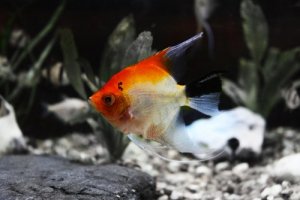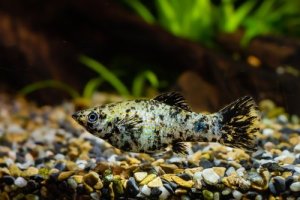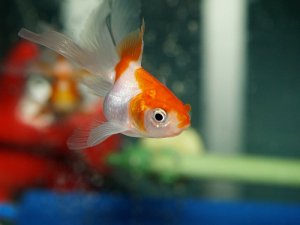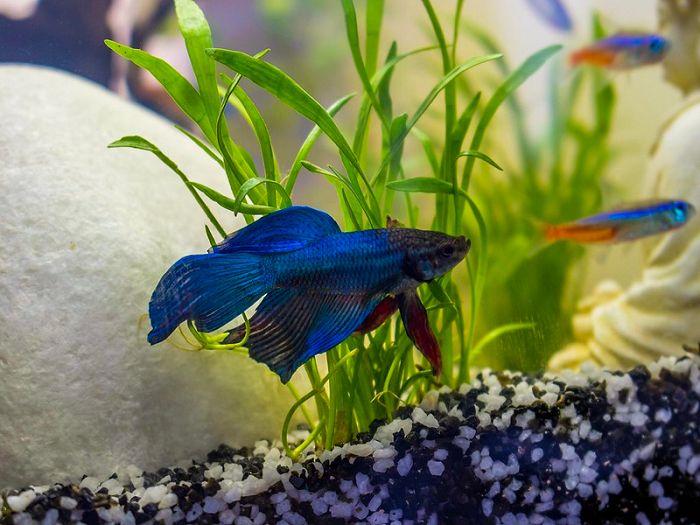
Choosing tankmates for your Betta Fish? The simplest way is to focus on fish that won’t come into conflict with each other. The main issues that arise with community tanks are Betta Fish being aggressive or territorial towards tankmates (chasing or nipping them) as well as tankmates nipping the long-flowing fins of your Betta.
It’s a myth that Bettas have to be kept alone! So, read on to see how a peaceful community tank can truly become a reality.
What Type Of Fish Can Live With A Betta?
Overall, ideal Betta Fish tankmates fall into two categories. They not only have different swimming and feeding habits to your Betta, but they are also placid and easygoing, and won’t nip your Betta’s fins. Likewise, tankmates should not have showy fins, as this can be taken as a threat by your Betta.
Author’s Note: A good Betta community tank is all about balance. The best Betta Fish tankmates are ones that share the same habitat and water parameters, but are not so similar that they pose any competition.
10 Best Betta Fish Tankmates List
1. Kuhli Loach
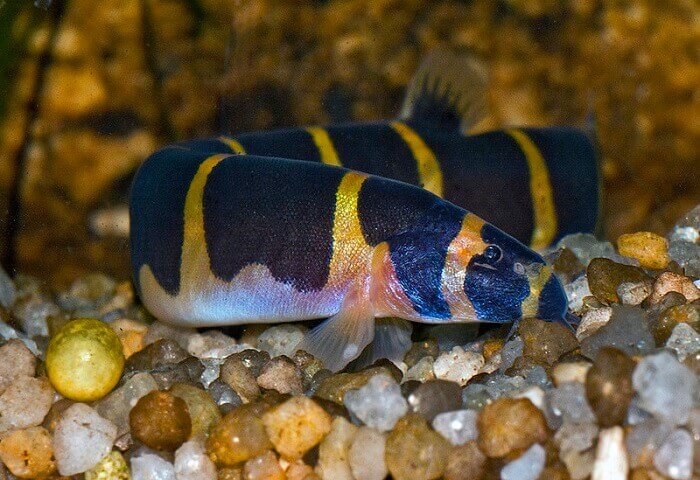
Basic Profile:
| Size | 2-3”/7 cm |
| Lifespan | Up to 14 years |
The Kuhli Loach is a small, eel-like fish that comes from the Indonesian island of Java. One of the best things about this fish that makes it so suitable for a betta tank is the fact that it mostly dwells around the bottom.
The difference in habits means that your Betta and Loaches won’t come into competition with each other. Apart from this, Kuhli Loaches have brown, white, and black stripes and an elegant swimming motion. It is best to keep them in groups of around 5 or 6. They are omnivorous but it’s best to start with algae wafers and only supplement with frozen protein like tubifex worms, or blanched vegetables.
2. Harlequin Rasbora
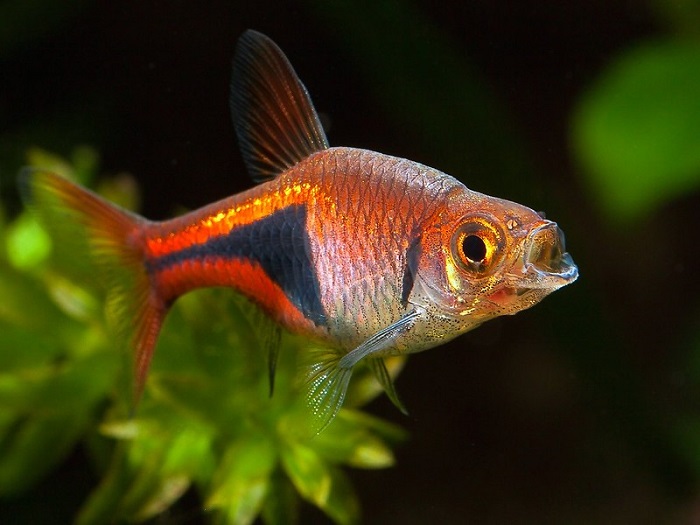
Basic Profile:
| Size | Max 2”/7cm |
| Lifespan | 6 years |
The Harlequin Rasbora is a smart-looking schooling fish with muted colors that comes from Cambodia, Vietnam, and Thailand. It prefers slightly acidic water due to its natural habitat containing water from peat bogs. However, it will happily live in the neutral pH of a betta tank and provides a calm and gentle tankmate for your other fish.
Like the Kuhli Loach, the Harlequin Rasbora lives at a different level in the water to your betta and has different habits. As a schooling fish, they stick with their own kind. They are omnivorous, so feed them tropical freshwater fish flake food and supplement with vegetables and live or frozen protein.
3. Cory Catfish
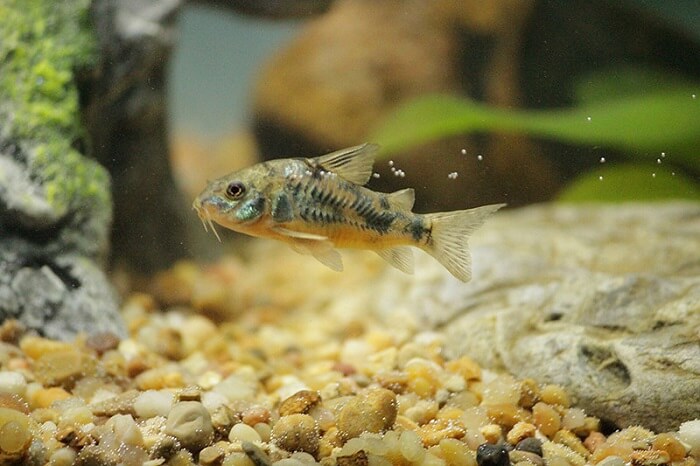
Basic Profile:
| Size | 2-3”/5-6 cm |
| Lifespan | 5-10 years |
Cory Catfish can make a fantastic addition to a more naturalistic Betta Fish tank. That is because these little fish do best with a sand substrate that does not hurt their stomach as they move along the bottom to feed. In fact, their name ‘corydoras’ comes from the ancient Greek for ‘armor’ and ‘skin’, showing their unusual scale pattern.
Did you know these popular Betta Fish tankmates are actually in the same family as goldfish – the carp family? Nevertheless, they have very different needs. They are bottom dwellers that enjoy algae wafers as a dietary staple, but they will also scavenge for algae and food your other fish have left. Unlike many Catfish, they are active during the day.
4. Oto Catfish
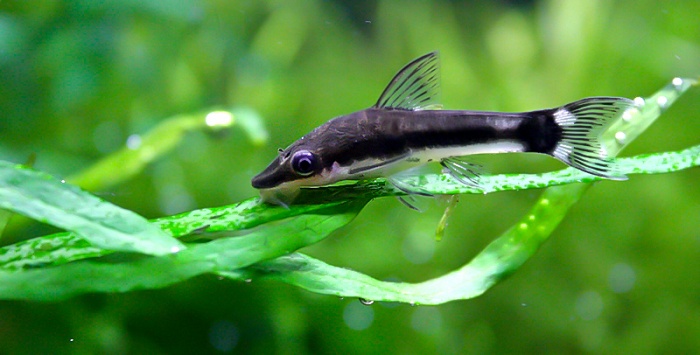
Basic Profile:
| Size | 2-3” or 6-7 cm |
| Lifespan | 5-7 years |
The most common types of Otocinclus or ‘Oto’ Catfish have a mottled coloring and a dark band down the side of their bodies making them both striking yet simultaneously easy to camouflage. Like Cory Catfish, they are bottom dwellers, so a sandy substrate is preferred. Unlike the Cory Catfish, the Otocinclus Catfish is more active at night. They have a similar diet, too, but it can be best to feed them in the evening when they are just waking up.
5. Bristlenose Pleco
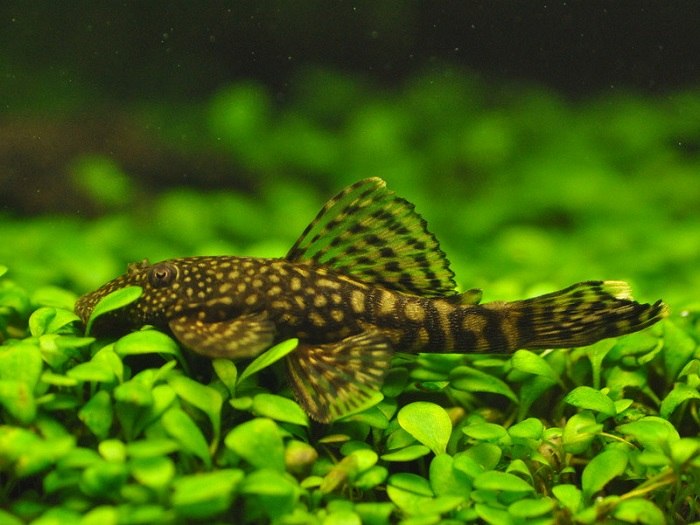
Basic Profile:
| Size | 4-5”/10-13 cm |
| Lifespan | 10-15 years |
The Bristlenose Pleco is one of the smaller Plecos in the world, making it a great betta tankmate. One thing to note is that its lifespan is actually much longer than that of a betta – about 2-3 times longer.
These are unusual-looking fish that like many Plecos eat off the tank floor and nibble algae off driftwood and tank decoration. Like other Plecos and Catfish they prefer sandy substrates and will scavenge their own food there, but feed them with algae wafers every second day to ensure nutrition. Like other Catfish, you can also supplement with blanched vegetables.
6. Neon Tetra
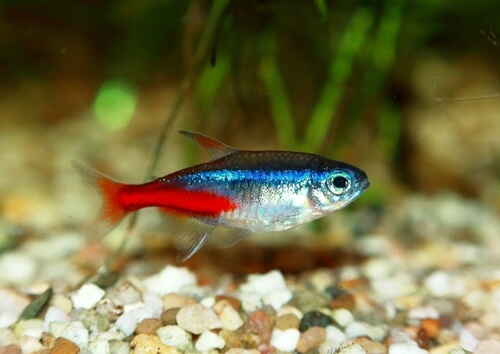
Basic Profile:
| Size | 2”/4cm |
| Lifespan | 5-10 years |
Neon Tetras are stunning-looking and surprisingly long-lived little fish. Red with an electric blue stripe, their schooling habits mean they dart around rapidly and hang out in striking clusters midwater. They are not only peaceful, but their colors go great with a Betta! They’re generally low maintenance, and it’s easy to troubleshoot if they get sick.
What’s most exciting about them is how they change color based on how well-lit their tank is – a pleasant surprise for many beginner aquarists! Feed them any good freshwater tropical fish food and supplement it with fresh protein and vegetables. Only feed what they can eat in five minutes.
7. Molly Fish
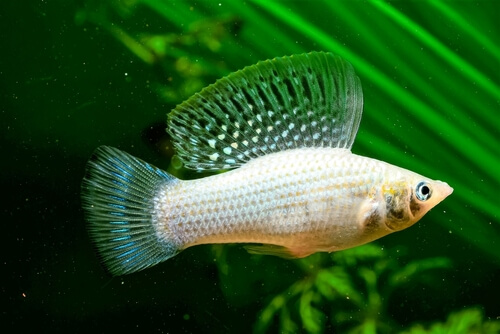
Basic Profile:
| Size | 4”/8cm |
| Lifespan | 4-5 years |
Often when choosing Betta tankmates, aquarists think of fish that are smaller than their betta and won’t become aggressive or nip at their fins. Molly Fish can grow larger than your Betta, but they make great tankmates due to their placid nature.
Mollies like to be kept in groups, so you may find your tank reaches 30 gallons (114 liters). They also aren’t as sensitive as Betta Fish when it comes to diet, so feed them freshwater tropical fish pellets or flakes as a basis and add protein or vegetables 2-3 times a week to supplement.
Author’s Note: An amazing fact about Molly Fish is that they are livebearers! This means unlike many species of fish, they give birth to live young. These unassuming little fish are devoted parents and the female carried her eggs until they are fully developed before she gives birth to fry that is immediately able to swim.
8. Rummynose Tetra
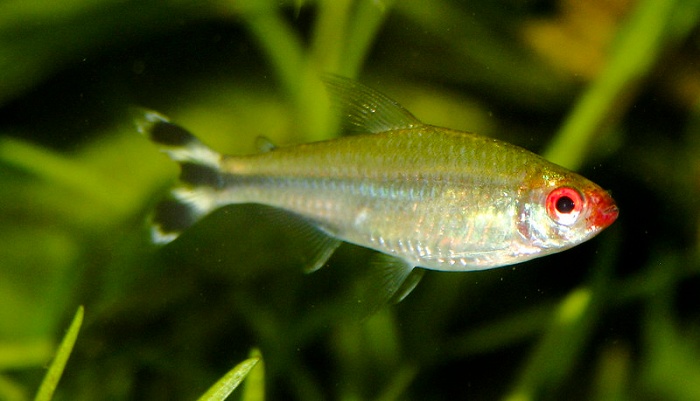
Basic Profile:
| Size | 2’/5cm |
| Lifespan | 5-6 years though can live longer |
When it comes to their role as Betta Fish tankmates, Tetras form a mixed group, as some of them can be aggressive fin nippers who will go for your betta’s trailing tail. However, like the Neon Tetra, this is a good-looking and peaceful fish that won’t harm your Betta. They are schooling fish, meaning they use safety in numbers to better detect predators. Thus, they prefer a group of at least 5 or 6.
The Rummynose Tetra has a clear body with black and white tails and distinctive red markings on their faces. For a sophisticated-looking tank, you can keep them with a red betta for a stunning and eye-catching effect. Their feeding is much the same as any other kind of Tetras. They will love live invertebrates, but make sure your tank is big enough to minimize competition.
9. Zebra Danio
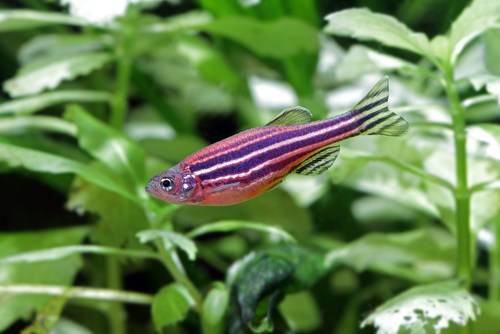
Basic Profile:
| Size | 1”/2.5 cm |
| Lifespan | 3-5 years |
Zebra Danios are one of the smallest fish on this list but don’t worry about them ever becoming prey for your Betta. They are schooling fish, so it’s best to get 6-7 or more depending on your tank size. These guys will largely leave your Betta alone, and vice versa.
These fish get their name from their stripes that at first look black-and-white yet also show myriad shades of blue and silver. These are understated and beautiful fish that originally come from India, Bangladesh, and some areas of Myanmar, so their requirements are similar to a Betta. Feeding is the same as with Tetras or Rasboras. They will love brine shrimps or glass worms as a form of fresh protein occasionally.
10. Chili Rasbora
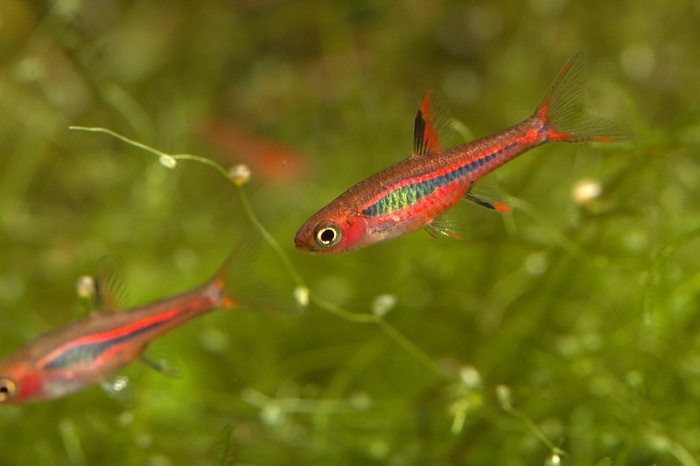
Basic Profile:
| Size | 1” – 2.5 cm |
| Lifespan | Max 8 years with good care |
Chili Rasboras are often popular with fish keepers due to their small size. Thus, they can be kept in smaller aquariums, but including them in a larger community tank with a Betta is a great way to help them fully thrive. In fact, like the Betta, they are often kept in aquariums that are too small.
These little fish live a surprisingly long time and have a striking red color that gives them their name. Feeding is the same as with Tetras and Rasboras.
Author’s Note: These fascinating fish come from a similar type of habitat to the Harlequin Rasbora – the swampy forests of Borneo. They also exhibit sexual dimorphism in which the male is smaller than the female, although also more brightly colored.
Betta Fish Tankmates And Aggression
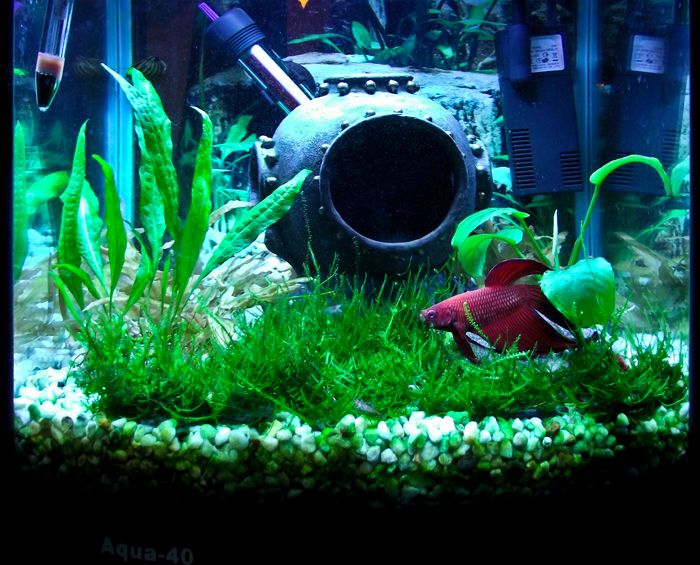
Betta Fish aggression can be a concern to some first-time fish keepers. However, it is not totally unpredictable. Bettas are often aggressive to defend their territory, and you can see certain warning signs before an attack, such as gill flaring.
Prevent aggression with a tank that is a minimum of 20 gallons (76 liters) for a Betta and a school of tankmates. In fact, the 10-gallon (38-liter) Betta tank is a myth. They may be able to survive, but they won’t thrive – and unhappy fish tend to be more aggressive.
Final Thoughts
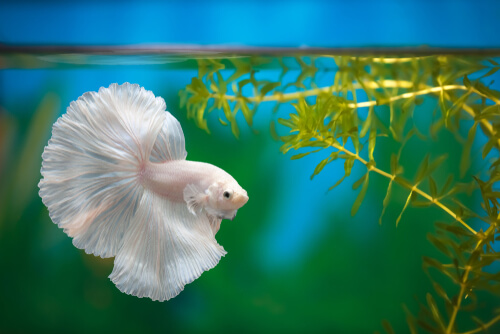
These are just a small fraction of the possible tankmates for a Betta tank, although the one thing they have in common is that they are beginner friendly and easy to source. However, what unites all good Betta Fish tankmates on this list is that they can tolerate the same conditions and will coexist.
In this way, they bust the oversimplified myth that Betta Fish have to be kept alone. Plus, they make beautiful focus points in their own right too.


